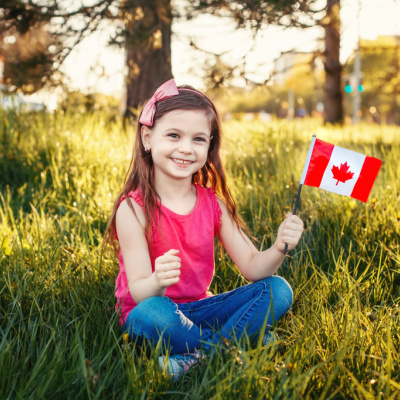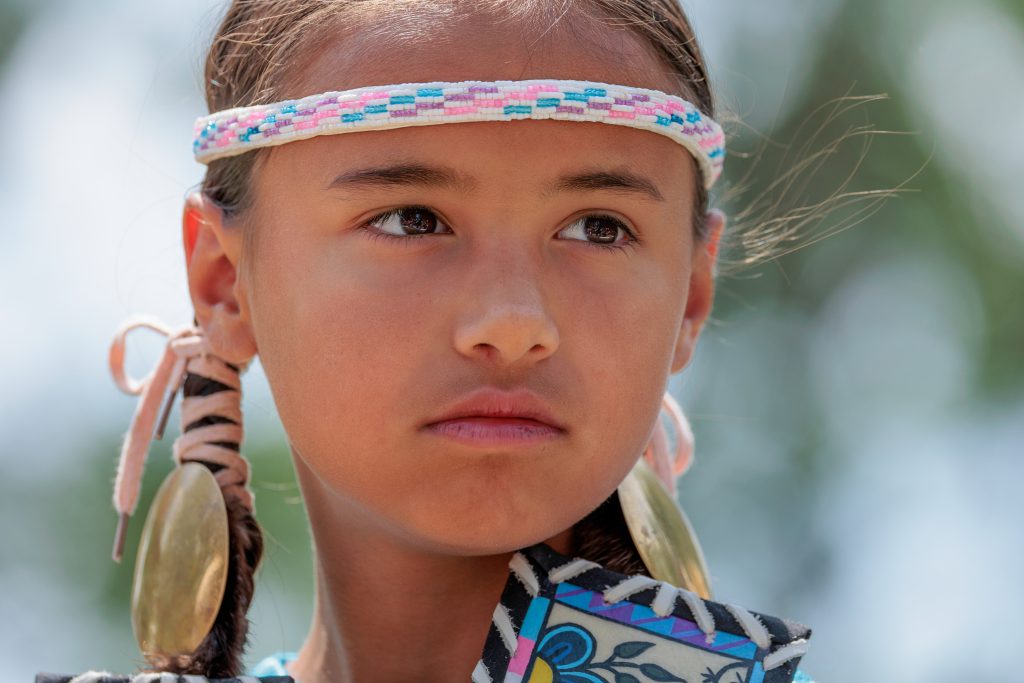Realizing Children’s Rights in Canada


With Canada being one of the wealthiest countries in the world, one might assume that the general conditions of life for children are among the best. However, there are significant disparities in the ways they are treated based on their geographical location and background. Upon comparing Canada to the thirty wealthiest countries on earth, one finds that it ranks amongst the poorest when it comes to realizing and upholding children’s rights.

Children’s Rights Index: 8,70 / 10
Yellow level: Satisfactory situation
Population: 38.01 million
Pop. ages 0-14: 15.8%
Life expectancy: 82.05 years
Under-5 mortality rate: 4‰
Canada at a glance
Located in North America, Canada is one of the largest countries that expands from the Atlantic to the Pacific Ocean, covering over ten million square meters of land. Canada is a federal State made up of ten provinces and three territories.
From a legal standpoint, Canada is a bijural State where both Common law and civil law coexist. Common law tradition applies throughout Canada for all public matters (including criminal law) as well as in most provinces. However, Quebec in all matters of private law, which includes child law, applies a civil law system. The intrinsic organization of the Canadian system makes for uneven protection and implementation of children’s rights.
Status of children’s rights [1]
One might assume that children’s rights in Canada are adequately implemented, respected, and promoted. However, the reality is strikingly different, as highlighted by UNICEF in several reports, referring to the « brutal truth about growing up in Canada » (UNICEF, 2016). Indeed, a 2020 UNICEF report stated that Canada ranks 30th among the 38th richest countries in the well-being of children (UNICEF, Report Card 16 on Canadian Companion, 2020).

From a legal perspective, Canada has ratified all the international instruments relating to children’s rights and benefits from a comprehensive legal system to implement said rights. Indeed, Canada has ratified the Convention on the Rights of the Child as well as two of its three additional protocols, namely the Optional Protocol on the Convention on the Rights of the Child on the Involvement of Children in Armed Conflicts, the Optional Protocol on the Sale of Children, Child Prostitution and Child Pornography.
Nationally, the Canadian Charter of Rights and Freedoms is part of the Canadian Constitution, and most human-rights-related issues, including those concerning children, are dealt with under this Charter.
However, at the national level, there remain provisions in place that are contrary to the CRC and threaten the realization of children’s rights. A striking example is Section 43 of the Criminal Code of Canada, which states: “Every school teacher, parent or person standing in the place of a parent is justified in using force by way of correction toward a pupil or child, as the case may be, who is under his care if the force does not exceed what is reasonable under the circumstances”. The dispute on the legality of this provision is still ongoing, with the Supreme Court Justice arguing against it (Society for Children and Youth of BC, 2013).
Addressing the needs of children
Right to identity
Every child in Canada holds the right to not be discriminated against, on the basis of sex, sexual orientation or gender. This is guaranteed by Article 2 of the CRC as well as nationally by several provincial laws and acts.
In 2017, Canada formally codified into its legal system, the concepts of gender identity and expressions to protect LGBTQ+ youth. As such, all LGBTQ+ children and youth are entitled to have a say in any decision regarding their health. Several Provinces have further banned conversion therapy (CBA.org, s.d.). Conversion therapy is the practice of attempting to change an individual’s sexual orientation to heterosexuality, or their gender identity from transgender to cisgender, using both psychological and physical interventions.
Right to education

In Canada, the right to education is contained in provincial education acts. Typically, education acts throughout Canada provide public education for all children from ages five to eighteen. In 2021, the Supreme Court of Canada rendered a landmark decision in the Moore vs B.C. case on students with disabilities. The Court held that students with disabilities were entitled to receive accommodation measures to ensure their access to all services of public education (Supreme Court of Canada, 2012).
Furthering the realization of the rights of children with disabilities, Canada ratified the Convention on the Rights of Persons with Disabilities (CRPD) which aims at promoting, defending and reinforcing the human rights of all persons with disabilities. Notably, Article 24 of the CRPD prohibits discrimination against children with disabilities and mandates the right to inclusive education. As a State party to the Convention, Canada has the duty to ensure access to inclusive education with non-disabled peers. Each Canadian province has accepted the Convention, which is now applicable law throughout the country (Inclusive Education Canada).
In 2016, Canada also committed to the Incheon Declaration for Education 2030 for inclusive and equitable quality education. This framework provides guidelines on how to translate into practice several commitments made within the Incheon declaration, to ensure inclusive and equitable quality education (UNESCO, 2015).
Right to health
Access to health care for Canadian children is largely influenced by their living circumstances. Indeed, while most developed States provide public policies that generate both higher quality and equitable distribution of social determinants for children’s health, such as Finland, Denmark, France, or Holland, Canada focuses on small-scale policies to limit the impact of inequalities, with little to no effect. This results in Canadian health policies being repeatedly criticized for reaching only a small part of their targeted audience (Raphael, 2010).
Right to protection
Canada has specific laws prohibiting any form of sexual exploitation both at the federal as well as provincial levels. More recently, steps have been taken to expand the laws to include internet exploitation. For instance, in June 2019, a reform was passed, amending Section 159 of the Criminal Code and setting the age for consensual sexual activity at sixteen. However, practice shows that there is little prosecution and conviction when taking into consideration the number of violations and complaints (Canadian Coalition for the Rights of Children, 2020).
Risk factors→ Country-specific challenges
Child poverty

In Canada, 1.25 million children live in poverty. This number represents one in five children (UNICEF, 2016). Most of these children are from vulnerable groups, mainly indigenous children and immigrant children. Child poverty affects mainly indigenous children, with over 50% of children on rural reserves suffering from poverty (Children First Canada, 2021). Similar threats affect Black, Arab, Korean and West Asian children, as they face more than double or triple the risk of poverty as compared to non-marginalized populations (Children First Canada, 2021).
Child abuse
What might arguably be more disconcerting is the fact that one in three children in Canada has experienced some form of child abuse (UNICEF, 2016). In regard to young people, 20% have reported being bullied at some point in their childhood (Children First Canada, 2021). It further appears that bullying is mostly aimed at children from marginalized communities, including LGBTQ+.
Additionally, surveys show that when reported, bullying rarely leads to sanctions, which in turn discourages victims from coming forward. Still, bullying should be taken seriously and calls for help have been made. Bullying causes a number of social, physical and mental health problems. For instance, children who are bullied suffer from headaches, anxiety, depression and other physical symptoms linked to fear, pain, and feeling of humiliation. It has further been proven that children “do not grow out of bullying” and can suffer long-term consequences affecting both their personal and professional lives (Prevnet, s.d.).
Sexual exploitation
Sexual abuse towards children has been a systemic problem in Canada for the past decades and dates back to colonization and the implementation of the residential school system (Truth and Reconciliation Commission of Canada). Recent reports show that child abuse is the leading cause of child death, despite legal protections (Children First Canada, 2021).
However, the data behind this claim is very unevenly collected. Violent behavior towards children is, to some extent, engrained in the Canadian system, especially due to Section 43 of the Criminal Code which allows for corporal punishment. The notion of “reasonable bounds”, which is the justification used for corporal punishment, is vague and has not been subject to proper interpretation.
Child sexual exploitation has increased in Canada, with over 4.3 million sexual exploitation reports being filed from 2014 to 2020 (Government of Canada, 2022), and a rapid increase of similar reports has been accounted for since the beginning of the pandemic (Canadian Centre for Child Protection, 2021). This drastic increase is mainly due to the overwhelming use of social media and the massive increase of digitalization in daily life.
The Canadian government reports that one in ten children is sexually victimized before they turn eighteen (Government of Canada, Infographic – Online Child Sexual Exploitation, 2021). Sexual exploitation in Canada mainly comprises the making or distribution of child pornography, the possession of child pornography, luring a child via a computer and the non-consensual distribution of intimate images (Thompson, 2020). However, this topic is still considered taboo for many, with little to no discussion happening between children and their guardians. (Government of Canada, 2022).
Discrimination

Discrimination has been a recurring theme when it comes to children’s rights in Canada and is deeply rooted in the country’s history, especially in regard to indigenous children. Canada recognizes three categories of indigenous people: Inuit, First Nations and Métis (of mixed origins). Recently, in July 2021, several mass graves were found in First Nations territories (The Conversation, 2021). Reports shed light on the fact that residential school systems were being used as a tool for “cultural genocide” and were responsible for the forced removal of over 150 000 young indigenous children from their families (The Conversation, 2021).
Indigenous people, partly due to the fact that they live in remote parts of the country, have less access to education services. Furthermore, within the public school system, classes are often held in either French or English, disregarding the languages spoken by indigenous communities. Furthermore, recent data shows that First Nations children represent 4% of the total child population in Canada and over a third of all foster children (Children First Canada, 2021).
Canada has recognized as a top priority the need to improve the situation of Aboriginal children. This has come after several international organizations, including the UN Committee on the Rights of the Child, have asked Canada to take significant steps to address the gaps between aboriginal and non-aboriginal children in accessing their rights. However, the response continues to be inadequate and barely goes beyond mere public apologies and statements (Canadian Coalition for the Rights of Children, 2020).
Problems concerning discrimination reach far beyond indigenous children. There have been several issues relating to Anti-Black racism, Anti-Asian racism, Anti-Islamic and Anti-Semitism (Children First Canada, 2021).
Infant mortality
It appears that child mortality (0.98 per 1000) and teen suicide (9.0 per 100 000) have increased in Canada (UNICEF, Report Card 16 on Canadian Companion, 2020). Out of the 17 OECD countries, Canada has the second-highest infant mortality rate (Children First Canada, 2021). Research shows that IRMs are not equally distributed among all of Canada’s provinces and territories.
The provinces of British Columbia, New Brunswick and Prince Edward Island are the only provinces under the threshold of 4.0 infant deaths per 1.000 live births. Unsurprisingly, research has also shown that regions most affected by infant mortality were those populated by racialized communities (Children First Canada, 2021).
Written by Léa Allix
Last updated on 27 February 2022
Bibliography:
Canadian Centre for Child Protection.(27 July 2021). New Statistics Canada crime data shows victimization of children intensified during pandemic. Retrieved from protechchildren.ca,https://protectchildren.ca/en/press-and-media/news-releases/2021/stats-canada-crime-data-pandemic, accessed on 25 February 2022.
Canadian Coalition for the Rights of Children. (2020). Rights in principle, rights in practice: implementation of the Convention on the Rights of the Child in Canada. Retrieved from http://rightsofchildren.ca/wp-content/uploads/2016/01/CCRC-report-on-rights-of-children-in-Canada.pdf , accessed on 25 February 2022.
CBA.org. (s.d.). Orientation sexuelle, identité de genre et expression de genre. Retrieved fromhttps://www.cba.org/Publications-Resources/Practice-Tools/Child-Rights-Toolkit/theChild/Sexual-Orientation-Gender-Identity-and-Gender-Expr, accessed on 27 February 2022.
Children First Canada. (2021). Top 10 Threats to childhood in Canada. Retrieved fromhttps://childrenfirstcanada.org/wp-content/uploads/2021/08/CFC-RC-Report-2021_Final.pdf, accessed on 25 February 2022.
Government of Canada. (2021). Infographic – Online Child Sexual Exploitation. Retrieved from https://www.canada.ca/en/public-safety-canada/campaigns/online-child-sexual-exploitation/infographic-online-child-sexual-exploitation.html, accessed on 25 February 2022.
Government of Canada. (2022, 02 19). Online child sexual exploitation. Retrieved fromhttps://www.canada.ca/en/public-safety-canada/campaigns/online-child-sexual-exploitation.html, accessed on 26 February 2022.
Inclusive Education Canada. (s.d.). Right to Education. Retrievedfromhttps://inclusiveeducation.ca/learn/right-to-education/#:~:text=In%20Canada%20the%20right%20to,well%20as%20protection%20from%20discrimination, accessed on 26 February 2022.
Prevnet. (s.d.). Creating a world without bullying. Retrieved from https://www.prevnet.ca/bullying/facts-and-solutions, accessed on 26 February 2022.
Raphael, D. (2010). The Health of Canada’s children: Towards the Future. Paediatric Child Health, 199-204. Retrieved from https://www.ncbi.nlm.nih.gov/pmc/articles/PMC2866311/, accessed on 25 February 2022.
Society for Children and Youth of BC. (2013). Children’s Rights in the Canadian Legal System. Retrieved from https://www.scyofbc.org/wp-content/uploads/2016/02/Child-Rights-in-Canadas-Legal-System-Complete.pdf , accessed on 26 February 2022.
Supreme Court of Canada. (2012, 11 09). Moore v. British Columbia. (2012 SCC 61). Retrieved from https://scc-csc.lexum.com/scc-csc/scc-csc/en/item/12680/index.do , accessed on 27 February 2022.
The Conversation. (2021, 07 30). the Conversation.com. Retrieved from the Conversation.com: https://theconversation.com/the-discovery-of-indigenous-childrens-bodies-in-canada-is-horrific-but-australia-has-similar-tragedies-its-yet-to-reckon-with-164706, accessed on 26 February 2022.
Thompson, E. (2020, 07 13). Child sex exploitation is on the rise in Canada during the pandemic. CBC. Retrieved from https://www.cbc.ca/news/politics/pandemic-child-sexual-abuse-1.5645315, accessed on 19 February 2022.
Truth and Reconciliation Commission of Canada. (s.d.). Indian Residential Schools: An overview. Retrieved from https://web.archive.org/web/20201112031549/http://www.trc.ca/assets/pdf/mroom_ResidentialSchoolsPamplet_en_dec11.2.pdf, accessed on 17 February 2022.
UNESCO. (2015). Education 2030: Incheon Declaration and Framework for Action Towards inclusive and equitable quality education and lifelong learning for all. Retrieved from https://iite.unesco.org/publications/education-2030-incheon-declaration-framework-action-towards-inclusive-equitable-quality-education-lifelong-learning/, accessed on 27 February 2022.
UNICEF. (2016). The Kids are not alright, it’s time for Canada to measure up!. Retrieved from https://childrenfirstcanada.org/wp-content/uploads/2021/03/ThekidsarenotalrightChildrenFirstCanada%E2%80%93November2016-3-1.pdf , accessed on 18 February 2022.
UNICEF. (2020). Report Card 16 on Canadian Companion. Retrieved from https://www.unicef.ca/sites/default/files/2020-09/UNICEF%20RC16%20Canadian%20Companion%20EN_Web.pdf, accessed on 18 February 2022.
[1] This article by no means purports to give a full or representative account of children’s rights in Canada it is merely intended to give an overview of the realization of children rights in Canada and the challenges faced.

